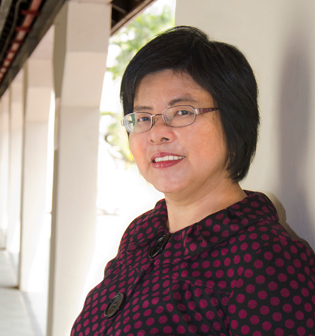Why Singapore’s English Teachers Should Embrace Singlish, Not Fight It
Is it time for Singaporean educators to embrace Singlish as a legitimate learning tool? What the Research […]
Read More
Clear delivery of content used to be equated with good teaching. The teachers of today, though, are going beyond that to engage their students in the Math classroom. Master Teacher Cynthia Seto points the way.
When Cynthia started teaching in 1979, she used vanguard sheets to create charts for her Math classes. Teachers now can easily do much more using computer software.
Resources are not the only difference between then and now. On pedagogy, she notes: “The emphasis was on clear delivery to the children, with very explicit examples. I’m not saying those are no good but now we need to go beyond that to engage them in learning.”

As Master Teacher, Cynthia mentors fellow Math teachers. She also seeks to promote teacher leadership and ownership of their professional development through networked learning.
As she sees it, “going beyond” the clear delivery of content means the role of the teacher has expanded. “Not only do we need to be good teachers, we also need to be facilitators and co-learners.”
This means teachers have the opportunity to interact and learn with their students. And even though we want students to be self-directed learners, teachers should observe the students and know when and how to step in to guide them along.
“When to scaffold and when to let go a little bit for students to explore, to make sense of their learning, and when to give the right amount of practice, which is very important in Math,” she elaborates.
Another way to engage students is to make use of what they like – technology. “Those children, when you give them computers and technology, their eyes will sparkle!”
Teachers are encouraged to tap on information and communications technology (ICT) to enhance students’ learning. Cynthia gives an example of how she would teach the concept of π (pi) to a Math class today.
Give each student a string to measure the circumference and diameter of a circular object, such as a coaster. Then get them to divide the circumference by the diameter, and enter the data into an ICT platform that allows real-time sharing of information and facilitates the analysis of the underlying mathematical relationships.
“With technology, it enables the children to have access to others’ data. When you have multiple data, it helps them to be able to see different perspectives and patterns, to come to a conclusion, and to generalize.”
“We want to engage the students in this way because we want them to develop this kind of thinking, to identify patterns and see relationships,” Cynthia explains. “These are important skills they need to have in the 21st century.”
In the 21st century classroom, we also want our students to be able to justify their solutions, besides giving the correct answers. They should be able to solve the Math problem and explain how they did it, explains Cynthia.
Have conversations with like-minded people, so that you can exchange ideas and know what’s happening.
– Cynthia Seto, on how to become a better teacher
Students also need to communicate their thought processes, especially for problem sums. To achieve this, teachers need to help them learn the language of Math.
Getting students to be peer assessors can help them become effective communicators.
For example, the teacher can get one student to pose a Math problem. The rest of the class then uploads their solutions using an ICT-sharing platform. The first student then acts as a teacher and explains why each answer is right or wrong.
“We want children to have this disciplinary thinking in Math, to see situations and generalize, and to summarize what they have learned. At the same time, we also want children to be able to communicate Math effectively to one another.”
What makes a good teacher? And what advice would she give to fellow teachers who want to teach well?
“Number one, you need to read up,” says Cynthia. “Read not only about pedagogy, but in terms of your own content knowledge. Content knowledge is a non-negotiable.”
Besides having strong subject mastery, teachers need to have a good understanding of the learners and the learning environment. That means understanding the social, psychological and pedagogical contexts in which learning occurs and how these affect student achievement and attitudes.
“The other important thing is to have conversations with like-minded people, so that you can exchange ideas and know what’s happening,” recommends Cynthia. One of the best ways to do so is to engage in research.
Research can “sharpen your senses, and develop ‘eyes’ to see what is happening in the classroom”. In this way, teachers will not just be able to deliver a lesson clearly, but also develop a clear vision of how various teaching strategies can benefit their students.
With these in mind, teachers will be able to ensure that they are teaching to the needs of the students and to make sure they are ready for the world beyond the classroom.